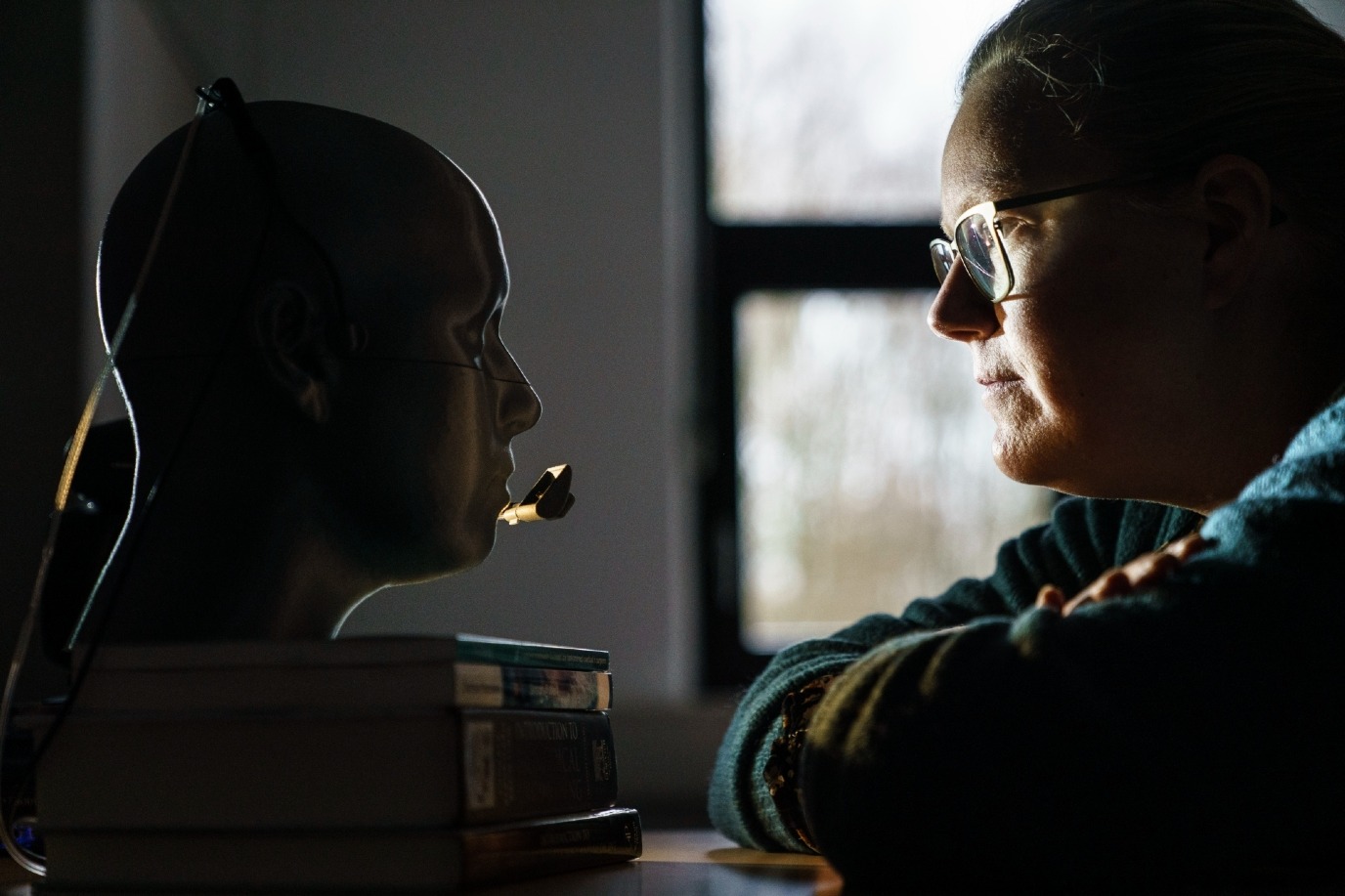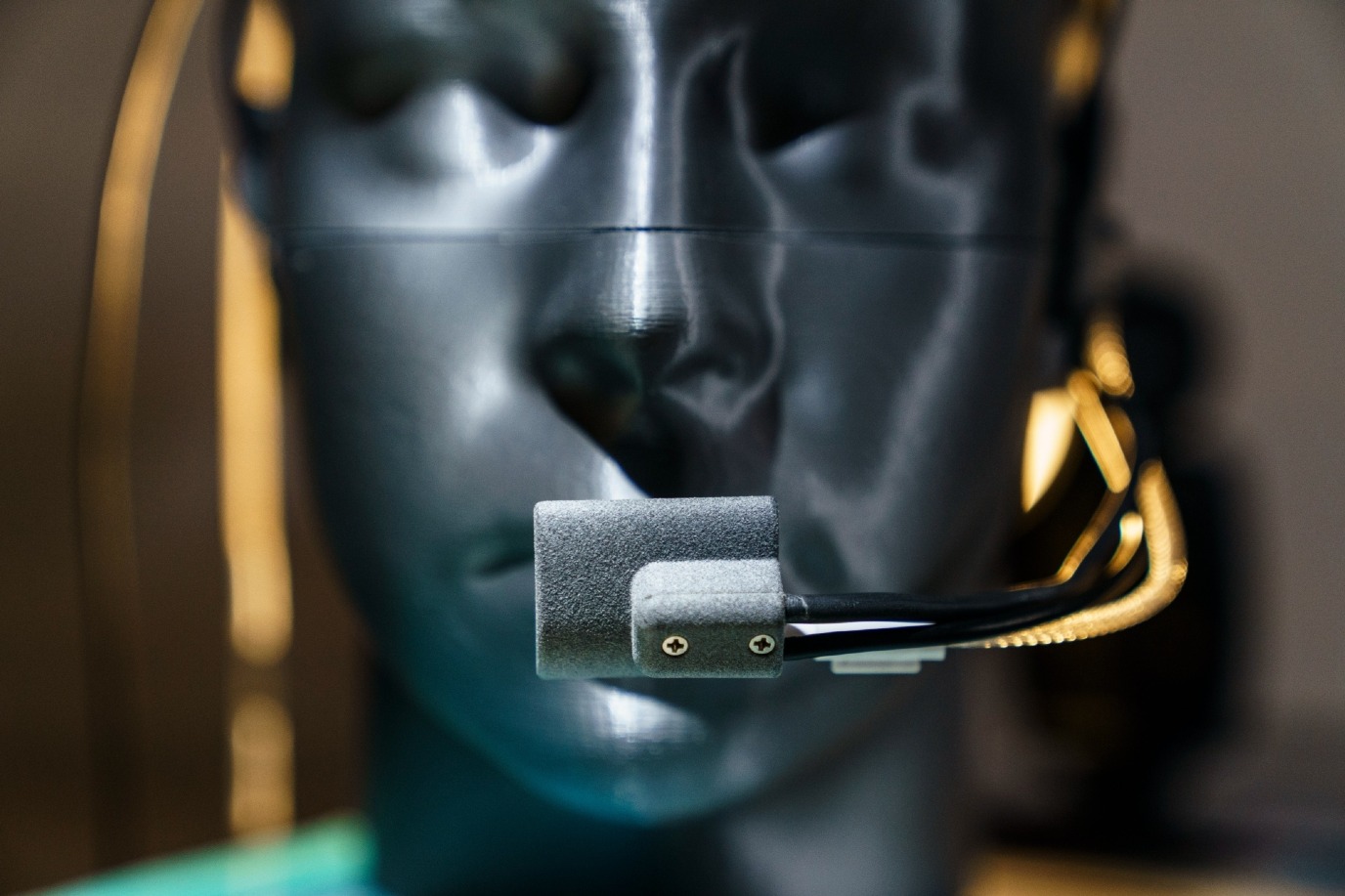Measuring how strenuous work is
How much energy does it take to lay bricks when building a wall or to walk with a prosthetic leg? There is a simple way to measure this by determining the amount of carbon dioxide a person exhales. However, being able to do this usually involves using a mask that makes breathing more difficult and talking impossible. Charissa Roossien developed a more user-friendly method.



Roossien devised an open system, a headset with a kind of cup that catches the breath. ‘I came up with an algorithm that filters out the effects of air and wind, and put a lot of effort into validating my measurements’. The breath of the user is directed into a backpack to be analysed. Different sensors can be added, such as a heart monitoring system and motion trackers, to increase the accuracy of the system and gather more relevant information about the user.
Roossien, who has a background in Mechanical Engineering and Biomedical Engineering, developed the proof of concept during her PhD. Now, as an assistant professor in Medical Device Design, she is working to turn this into an actual product. ‘It would be a shame if a technology that was developed during research ended up on a shelf somewhere.’
To bring her idea to the market, she will have to validate the proper functioning and usability of her design. ‘It would be easier to label it as a fitness gadget, because labeling it as a medical device means we have to fulfill all kinds of medical regulations and validate it in the clinic, which is much harder.’ To this end, she cooperates with several companies, including medical ones, and the UMCG. There are many potential applications: ‘For example, we can measure the workload for older employees – because of ageing, the daily workload can become a strain. Or it could be used to monitor patients remotely, for example patients who suffer from long covid.’
Text: FSE Science Newsroom | René Fransen
Photos: Reyer Boxem
Every two weeks, UG Makers puts the spotlight on a researcher who has created something tangible, ranging from homemade measuring equipment for academic research to small or larger products that can change our daily lives. That is how UG researchers contribute to the solutions for big scientific and societal challenges. Previous portraits of Makers can be found on the overview page .
For decades, engineering teaching and research at the UG has been part of a wide array of strong disciplines, and from a national point of view, our collaboration with the four technical universities is becoming more and more intensive.
More information
More news
-
15 September 2025
Successful visit to the UG by Rector of Institut Teknologi Bandung
